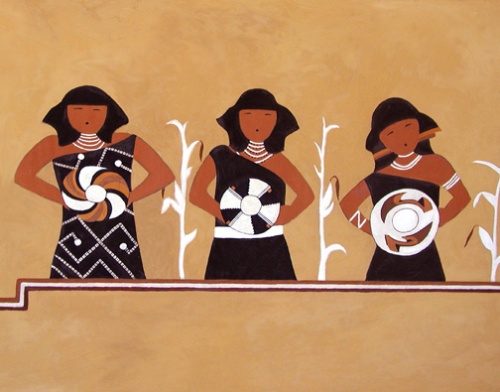Styles of singing in which pitch is fixed, categorical, and independent of loudness originated in prehistoric times as a by-product of the development of musical instruments capable of this loudness-pitch independence.
The physical and consequent acoustic properties of the voice suit it to producing a range of timbres and vocalizations in which pitch and loudness are correlated and not controlled independently. To sing a fixed pitch while varying loudness, singers must make compensations in the vocal mechanism.
This unnatural, albeit ubiquitous, singing was influenced by instruments. One of the advantages of pitch-loudness independence is in teaching infants to analyze vocalizations in a reductionist manner.
This according to “Did non-vocal instrument characteristics influence modern singing?” by Joe Wolfe and Emery Schubert (Musica humana II/2 [fall 2010] pp. 121–138).
Above, The singing maidens of Pottery Mound, a reproduction by Thomas Baker of an 800-year-old Anasazi image.Below, Ella Fitzgerald demonstrates how instrumental music can influence singing.







